#HVAC optimization
Explore tagged Tumblr posts
Text
0 notes
Text
Why Programmable Thermostats Are Essential for Your Home
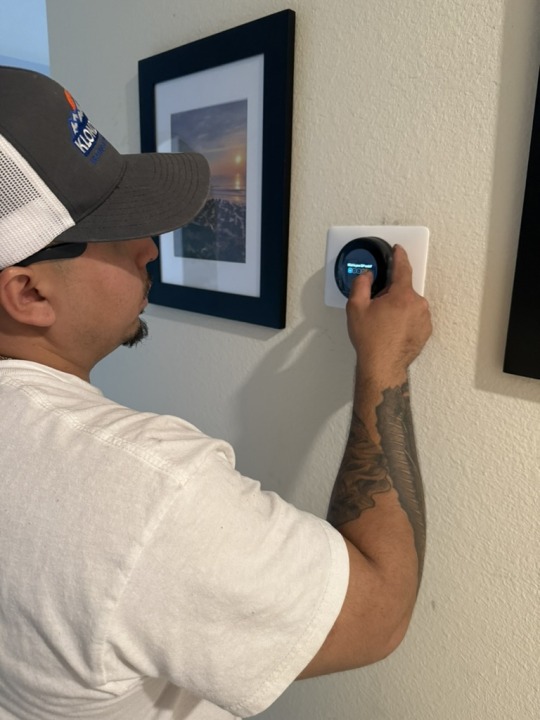
Summary:
Did you know that nearly half of your home’s energy bill goes to heating and cooling? Yet, many homeowners unknowingly waste energy by running their HVAC systems inefficiently. The good news? A programmable thermostat can change that—automating your home’s climate control, cutting down on waste, and saving you money without sacrificing comfort.
Table of Contents
Introduction
Why Smart Thermostats Are the Key to Energy Savings
Top Features to Look for in a Programmable Thermostat
1. Demand Response
2. Custom Scheduling
3. Wi-Fi Capabilities
4. Automatic Updates
5. Geofencing
6. Energy Monitoring and Reporting
7. Smart Home Integration
How to Maximize Energy Savings with Your Smart Thermostat
1. Customizing Temperature Settings for Optimal Efficiency
2. Using Scheduling Features to Control Heating and Cooling
3. Leveraging Geofencing and Smart Home Integration
4. Monitoring Energy Usage with Your Thermostat’s App
5. Regular Maintenance Tips to Keep Your Thermostat Efficient
End Note
Introduction
Keeping your home comfortable while saving on energy costs can be a challenge, especially with fluctuating temperatures throughout the year. While regular HVAC maintenance helps, one of the most effective yet often overlooked solutions is installing a programmable thermostat.
A smart thermostat does more than just regulate your home’s temperature. It learns your habits, adapts to your lifestyle, and optimizes energy usage, reducing waste and lowering utility bills. With automatic temperature control, remote access, and energy-saving features, a programmable thermostat is a must-have for homeowners looking to enhance comfort and efficiency effortlessly.
In this article, we explore the benefits of programmable thermostats to home comfort and HVAC optimization
Why Smart Thermostats Are the Key to Energy Savings
Installing a smart home thermostat helps optimize energy usage and comfort, making it a valuable addition to your home.
These devices can learn your schedule, preferences, and behavior over time, automatically adjusting the temperature to match your lifestyle. They reduce heating and cooling when you are away, reducing energy wastage.
Many modern thermostats provide insights into energy usage, helping you identify patterns and making informed decisions on climate control and energy optimization. These insights allow you to make adjustments to your temperature settings, resulting in energy savings and a reduction in utility bills.
Top Features to Look for in a Programmable Thermostat
If you are looking to buy a thermostat, here are some of the best programmable thermostat features that you should look for:
1. Demand Response
Demand response is a program hosted by utility companies. It gives them access to your thermostat, allowing them to adjust your temperature during peak energy demand times. This reduces your energy consumption and lowers utility bills.
2. Custom Scheduling
Scheduling allows you to set heating and cooling depending on the time of day. This feature ensures that you don’t heat or cool your home unnecessarily. According to the US Department of Energy, you can save 10% annually by setting your thermostat back 7-8 degrees for 8 hours a day.
3. Wi-Fi Capabilities
WiFi capability is a core feature of intelligent thermostats. The thermostat accesses the internet through your home network. This allows you to remotely control your home temperature from your smartphone.
4. Automatic Updates
Choosing a thermostat that supports automatic updates is an important aspect of futureproofing your home. This means you can keep your home thermostat up-to-date on key software changes without needing to buy a new model.
5. Geofencing
Scheduling is not perfect because not every household has a set schedule. Geofencing solves this with the use of the GPS on your phone. This feature allows all family members to link their smartphones to the thermostat, which then uses the GPS on your phone to determine if you are home or not.
Some thermostats can even detect when you are on your way home and prepare the temperature for your arrival.
6. Energy Monitoring and Reporting
Energy monitoring is an often overlooked feature of intelligent thermostats. This feature tracks energy usage and provides reports showing where you are saving and where you can be more efficient.
A sudden spike in energy bills is often the first sign of an HVAC issue. With energy monitoring, your thermostat acts as an early warning system, helping you detect problems and schedule repairs before they escalate.
7. Smart Home Integration
Smart home integration is a core feature of connected thermostats. It enhances convenience, comfort, and functionality. Imagine your thermostat working in harmony with your security cameras, smart lights, and voice-assistant systems.
This level of integration allows for a fully automated home environment. For instance, when your thermostat senses that you have left the house, it triggers your home security system and turns off the lights.
How to Maximize Energy Savings with Your Smart Thermostat
We live in a world where energy savings are crucial to environmental sustainability, cost control, and optimal comfort. Here are some ways to maximize energy savings with a smart thermostat:
1. Customizing Temperature Settings for Optimal Efficiency
One way to save money using intelligent thermostats is through precise temperature control. Your thermostat allows you to configure temperature settings until you find the right balance between comfort and energy efficiency.
Smart temperature devices also have adaptive learning capabilities, which allow them to learn your schedule and preferences, using that data to provide optimal heating and cooling operation.
2. Using Scheduling Features to Control Heating and Cooling
The best programmable thermostat lets you create custom schedules for your daily routine. For instance, you can program the thermostat to lower the temperature at night while you sleep and raise it before you wake up.
Turning on smart scheduling enhances HVAC optimization, heating and cooling your home only when necessary. This will result in substantial energy savings at the end of the month.
3. Leveraging Geofencing and Smart Home Integration
Geofencing takes energy efficiency to another level by using your phone’s GPS to determine whether you are home or away. When you leave your home, the thermostat switches to an energy-saving mode. And when you get back, it returns to your preferred temperature settings.
Also, smart thermostats can be integrated with other smart home devices, creating an energy-efficient home environment. For instance, linking with smart blinds can help regulate indoor temperature, blocking out direct sunlight in the summer and allowing it in the colder months. This enhances convenience and streamlines energy management.
4. Monitoring Energy Usage with Your Thermostat’s App
WiFi-enabled thermostats are equipped with energy usage reports. This report provides insights into energy consumption and your system’s performance. It offers a clear breakdown of energy consumption patterns, identifying peak usage times and potential areas for improvement.
By analyzing this data, you can make decisions on optimizing your HVAC system and adjusting your habits to enable energy savings and reduce utility bills.
5. Regular Maintenance Tips to Keep Your Thermostat Efficient
Smart thermostats are equipped with alert and notification systems that keep you informed of your system’s performance. If there are sudden or unusual temperature fluctuations, your thermostat will alert you to the malfunction. It also sends regular maintenance reminders such as filter replacements, battery changes, software updates, etc.
End Note
Smart thermostats are not just important for temperature regulation. They also provide energy efficiency reports, allowing you to optimize energy consumption and extend the lifespan of your HVAC system. These devices can also be integrated with other smart home devices, enhancing energy savings, reducing utility bills, and ensuring comfort and convenience.
Take control of your home’s comfort and energy efficiency today! Klondike Air will help you choose and install the perfect Wi-Fi-enabled thermostat tailored to your needs. Contact us now for expert advice and professional installation.
This blog was originally published at https://klondikeair.com/why-programmable-thermostats-are-essential/
0 notes
Text
"AC Maintenance Tips for Homes and Businesses in Saudi Arabia’s Harsh Climate"
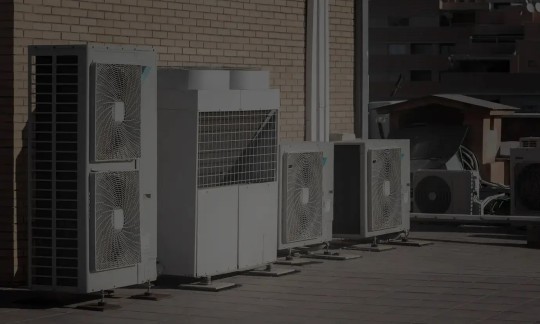
Air conditioning systems are vital for both homes and businesses in Saudi Arabia, where temperatures often soar to extreme levels. Ensuring that your AC unit functions at its best is essential not only for comfort but also for maintaining efficiency and reducing energy costs. Proper maintenance can prevent unexpected breakdowns during the hottest months, while also prolonging the lifespan of your system.
To maintain an efficient and reliable cooling system, many property owners opt for professional AC maintenance services to ensure their air conditioning units stay in top condition. Regular maintenance services can help identify potential issues before they escalate, avoiding costly repairs or the need for a full replacement.
1. Regular Filter Cleaning and Replacement
One of the simplest yet most effective maintenance tasks for any air conditioning system is regular filter cleaning or replacement. In Saudi Arabia’s dusty environment, filters can quickly become clogged with dust and debris, making the system work harder and reducing efficiency. Dirty filters restrict airflow, which not only increases energy usage but also decreases the unit's ability to cool properly. For both homes and businesses, it is recommended to clean or replace filters every one to three months, depending on the frequency of use.
2. Inspect and Clean Condenser Coils
The outdoor unit of your air conditioning system contains condenser coils that are responsible for releasing the heat absorbed from the indoor air. These coils are exposed to the elements, and in a harsh climate like Saudi Arabia, dust, dirt, and debris can easily accumulate. When the coils are dirty, the system's ability to dissipate heat is compromised, leading to reduced cooling performance and higher energy consumption. Regular cleaning of the condenser coils helps ensure optimal performance and efficiency.
3. Check Refrigerant Levels
For your AC system to cool effectively, it needs the correct amount of refrigerant. Low refrigerant levels can lead to inadequate cooling, causing the system to run longer and work harder. Over time, this can increase wear and tear on the unit and even lead to system failure. It’s important to have a professional check refrigerant levels during routine maintenance and top off as necessary to keep your system running smoothly.
4. Inspect Ductwork for Leaks
Leaky ductwork can significantly affect the efficiency of your air conditioning system, as cool air escapes before it reaches its intended destination. For businesses and larger properties, this can result in uneven cooling, higher energy bills, and an overworked AC unit. Regularly inspecting ductwork for leaks or gaps and sealing them as needed will help ensure that your air conditioning system is delivering cooled air efficiently.
5. Schedule Professional Maintenance
In Saudi Arabia’s extreme climate, scheduling professional AC maintenance at least twice a year is highly recommended. Professional technicians have the knowledge and tools to thoroughly inspect your system, clean essential components, and identify potential problems before they escalate. Businesses, in particular, can benefit from having a comprehensive maintenance plan to avoid costly downtime due to AC failure.
Whether you own a small home or manage a large commercial facility, regular AC rental service and maintenance are crucial for ensuring the longevity and efficiency of your cooling systems.
6. Optimize Thermostat Settings
Maintaining an optimal temperature setting on your thermostat can greatly impact energy usage and overall system performance. In Saudi Arabia, where temperatures can reach extreme highs, setting your thermostat just a few degrees higher can significantly reduce the strain on your AC unit. Additionally, programmable thermostats allow you to set different temperatures based on your schedule, which can help save energy when cooling is not needed.
7. Keep the Area Around the Outdoor Unit Clear
The outdoor unit of your air conditioner needs adequate airflow to function properly. Debris such as leaves, dirt, and plants can obstruct the airflow, causing the unit to work harder and reducing its efficiency. Regularly check and clear any debris from around the outdoor unit, and make sure that there is at least two feet of clearance on all sides to promote optimal airflow.
8. Ensure Proper Ventilation
Ventilation plays a crucial role in the effectiveness of your AC system, particularly in business settings where large numbers of people and equipment generate heat. Poor ventilation can increase humidity levels, making it harder for your air conditioner to cool the space. Make sure that vents and return air registers are not blocked by furniture or other obstructions, and consider using ceiling fans to help distribute cool air more evenly throughout the space.
Conclusion
Maintaining your air conditioning system is essential in Saudi Arabia’s harsh climate, where efficient cooling is a necessity rather than a luxury. By following these AC maintenance tips, you can ensure that your system operates efficiently, keeps energy costs under control, and provides reliable cooling when you need it most.
Investing in regular AC maintenance service is key to extending the life of your system and avoiding the discomfort and expense of unexpected breakdowns. Whether for a home or business, proper maintenance is a proactive step toward achieving consistent and cost-effective cooling year-round.
#Commercial chiller maintenance#HVAC maintenance#Chiller efficiency#AC maintenance service#Chiller rental service#Cooling solutions Saudi Arabia#Energy-efficient cooling#Chiller system repair#Chiller optimization#Facility management#Preventive maintenance#Refrigerant monitoring#Compressor maintenance#Saudi Arabia HVAC services#Cooling equipment upkeep#HVAC Maintenance#Chiller Maintenance#Commercial Cooling Solutions#Energy Efficiency#Saudi Arabia Climate Control#Building Management Systems#Facility Management#AC Maintenance Services#Chiller Rental Services#Sustainable Cooling Solutions#Industrial Cooling Systems#Preventive Maintenance Tips
3 notes
·
View notes
Text
Expert Graphic Design Services in Monroe, IN | Designed By Ced
Professional Graphic Designer Services in Monroe, IN by Designed By Ced Monroe, IN, is a bustling town with a growing need for high-quality graphic design services. In such a competitive market, standing out is crucial for businesses of all sizes. That’s where Designed By Ced comes in, offering top-notch graphic design services tailored to meet the unique needs of clients in Monroe, IN. Why…
#ad design#blue-collar-business-website#branding for skilled trades#construction-company-web-design#contractor marketing websites#contractor-website-design#custom-websites-for-contractors#designed-by-ced#electrician website design#excavation company web design#facebook ads#fence installer website designer#flooring contractor website design#foundation repair website design#garage door installer website design#Google Ads#graphic design#graphic-designer#gutter service web designer#handyman website design company#hvac contractor web designer#in#junk removal business website design#landscaping business website design#lead generation websites for contractors#local-business#marketing design#mobile-optimized websites for trade companies#mold remediation company web developer#Monroe
0 notes
Text
Optimizing Furnace Airflow: Why the Right Blower Wheel Matters for Industrial Efficiency
In industrial heating systems, airflow is everything. Poor airflow in your furnace setup can result in uneven heat distribution, increased energy costs, and premature equipment failure. If you're an industrial facility manager or HVAC technician in the U.S., you already know how vital it is to keep systems running at peak efficiency.
One of the most overlooked components in this equation is the furnace blower wheel — the very part responsible for circulating air efficiently throughout your system.
Let’s explore how choosing the best blower wheel for your furnace can dramatically optimize furnace airflow, improve system performance, and reduce operating costs — especially when you choose Central Blower’s expertly engineered solutions.
🔍 Understanding Furnace Blower Wheels
The blower wheel is a type of centrifugal fan that draws air through the furnace and pushes it into the ductwork. It’s what moves heated air throughout your industrial space.
But not all blower wheels are created equal. Key factors like blade shape, material quality, and balance precision directly affect furnace blower performance.
💨 Why Airflow Optimization Matters
When furnace airflow isn’t optimized, it causes:
Inconsistent heating across zones
Overworked motors, shortening their lifespan
Higher energy bills due to inefficiencies
Poor indoor air quality from stagnation or airflow dead zones
This can cost your business thousands annually in energy, maintenance, and downtime.
🛠️ Central Blower’s Advantage: Precision-Engineered Blower Wheels
At Central Blower, our furnace blower wheels are specifically designed to maximize airflow efficiency. These high-performance components are tested for:
Aerodynamic blade configuration
High static pressure resistance
Durability in high-temperature environments
Corrosion-resistant materials for longevity
Each wheel is crafted to enhance furnace blower performance and deliver optimal airflow, especially in demanding industrial environments.
✅ Pro Tip: For facilities operating 24/7, upgrading to a precision-balanced blower wheel can improve energy efficiency by up to 15%.
🔍 Primary Factors When Choosing the Best Blower Wheel for Furnace Systems
Here’s what industrial buyers should consider:
Wheel Size & Fit: Compatibility with furnace housing
Material Type: Aluminum, steel, or composite depending on temperature and exposure
Blade Type: Forward curved, backward inclined, or radial for different flow demands
RPM & Airflow Ratings: Ensure specs meet system requirements
Need help matching specs? Explore Central Blower's furnace blower wheel selection for a full guide.
📊 Case Snapshot: Industrial Facility in Ohio Upgrades to Central Blower Wheel
A food processing plant in Ohio upgraded their aging furnace blower wheel to Central Blower's backward-inclined model. The result?
20% reduction in energy consumption
Even temperature distribution across all processing zones
Maintenance intervals extended by 6 months
This is a classic example of how a simple component swap can lead to substantial operational gains.
❓ Q&A: What Industrial Owners Ask About Furnace Blower Wheels
Q: How often should a furnace blower wheel be replaced? A: For high-demand industrial systems, it’s best to inspect annually and replace every 3–5 years, depending on wear and airflow drop.
Q: Can the wrong blower wheel cause system overheating? A: Yes. Insufficient airflow can trap heat, causing your furnace to overheat and even trip safety shutdowns.
Q: Is custom sizing available from Central Blower? A: Absolutely. Central Blower offers customized solutions to meet the needs of specialty applications or retrofitted systems.
🔁 Incorporating Long-Tail and LSI Keywords Naturally
If you're aiming to optimize furnace airflow in industrial HVAC systems, upgrading the blower wheel should be your first move.
Looking for a replacement blower wheel for your industrial furnace? Central Blower’s catalog offers reliable solutions.
The best blower wheel for furnace performance isn't a generic option — it's a precision-fit, balanced, and durable part.
✅ Key Takeaways
Furnace airflow is crucial to system efficiency and heat distribution.
The furnace blower wheel plays a direct role in airflow quality.
Central Blower offers precision-engineered blower wheels ideal for industrial systems.
Upgrading can reduce energy use, extend equipment life, and improve heating consistency.
📞 Call to Action
Ready to optimize your furnace airflow with the right blower wheel? 👉 Browse Central Blower’s furnace blower wheel selection now or contact our technical team for personalized guidance.
#optimize furnace airflow#best blower wheel for furnace#furnace blower performance#replacement blower wheel for your industrial furnace#optimize furnace airflow in industrial HVAC systems#airflow efficiency#blower fan blade#industrial heating systems
0 notes
Text
Why Choose Experienced Commercial HVAC Contractors in Colorado Springs?

All Type Mechanical Services, Inc. provides top-notch commercial air conditioner installation in Colorado Springs. Our skilled technicians are experts in repairing, maintaining, and optimizing air conditioning systems for businesses of all sizes. Whether you need a quick fix, routine maintenance, or a full system replacement, we deliver reliable and efficient solutions tailored to your needs. Keep your business cool and comfortable with our professional HVAC services. Contact us today to schedule your service!
#Commercial HVAC Contractors in Colorado Springs#air conditioner installation#Mechanical Services#HVAC services#repairing#maintaining#and optimizing air conditioning systems
0 notes
Text
Download EVAP-COND 5.0: The Ultimate Heat Exchanger Simulation Tool for HVAC Engineers
In today’s energy-conscious world, optimizing HVAC systems has never been more critical. As a mechanical engineer who has worked extensively with heat exchanger design, I’m excited to share insights about EVAP-COND 5.0, NIST’s powerful simulation package that’s transforming how we design and analyze finned-tube evaporators and condensers. EVAP-COND represents the culmination of decades of…
#carbon dioxide refrigerant#computational intelligence#condenser design#custom refrigerant blends#evaporator modeling#heat exchanger performance#HVAC simulation#inned-tube heat exchangers#ISHED#low-GWP refrigerants#NIST simulation software#non-uniform air distribution#R1234yf#REFPROP#refrigerant circuitry optimization#refrigerant distribution#supercritical refrigerant operation#TableGen2#thermophysical properties#tube-by-tube analysis
0 notes
Text
https://www.linkedin.com/in/seoforplumbing/
#SEO For Plumbing#Plumber SEO Experts#Local SEO Plumbers#Plumbing Company SEO#Plumbing Search Engine Optimization#Plumbing HVAC SEO
0 notes
Text
Essential Steps to Get Your Home Ready for a New AC System
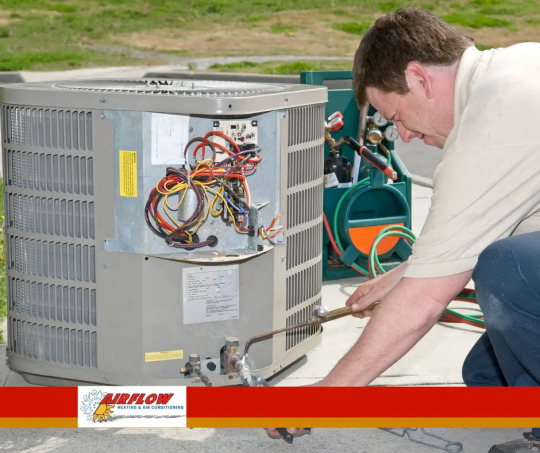
A new air conditioning installation is a significant investment that can improve your home's comfort and energy efficiency. Proper preparation ensures a smooth process and maximizes the performance of your new system. Whether you're replacing an outdated unit or installing an air conditioner for the first time, following essential steps can help you get your home ready for the upgrade.
Assess Your Home’s Cooling Needs
Before scheduling an air conditioning installation, it’s important to evaluate your home’s specific cooling requirements. Factors such as the size of your home, insulation quality, number of occupants, and local climate all play a role in determining the right AC unit. Consulting with a professional HVAC technician can help you choose an appropriately sized system that will efficiently cool your space without excessive energy consumption.
Choose the Right Air Conditioning System
Selecting the best AC system for your home is crucial for long-term comfort and efficiency. There are several types of air conditioning units available, including:
Central Air Conditioners: Ideal for whole-home cooling, these systems use ductwork to distribute conditioned air evenly.
Ductless Mini-Splits: A great option for homes without ductwork, providing zoned cooling for different areas.
Window or Portable Units: Suitable for smaller spaces or supplemental cooling but not ideal for whole-home use.
Each type of air conditioner has its advantages, and an experienced HVAC technician can guide you in choosing the best system based on your home's layout and cooling needs.
Inspect and Prepare Your Ductwork
If your new air conditioning installation involves a central air system, it’s essential to ensure your ductwork is in good condition. Leaky or dirty ducts can reduce efficiency and cause uneven cooling. Have a professional inspect and seal any leaks before the installation process begins to maximize airflow and system performance.
Clear the Installation Area
To facilitate a hassle-free air conditioning installation, clear the area where the indoor and outdoor units will be placed. Remove any furniture, decor, or obstacles that might obstruct the installation process. For the outdoor unit, ensure the surrounding area is free from debris, plants, and other obstructions to allow for proper airflow and system efficiency.
Ensure Proper Electrical Setup
A new AC system may require electrical upgrades to handle the power load efficiently. Check with your HVAC technician or electrician to confirm that your home’s electrical panel and wiring meet the necessary requirements. This step prevents issues such as system malfunctions or power failures due to inadequate electrical capacity.
Improve Home Insulation and Sealing
To maximize the efficiency of your air conditioning installation, evaluate your home’s insulation and sealing. Proper insulation helps maintain consistent indoor temperatures and reduces the workload on your AC unit. Sealing gaps around windows, doors, and vents prevents cool air from escaping and minimizes energy waste, leading to lower utility bills.
Consider Smart Thermostat Integration
Upgrading to a smart thermostat can enhance the performance of your new AC system by providing precise temperature control and energy savings. Many modern air conditioning installations include compatibility with smart thermostats, allowing you to program cooling schedules, monitor energy usage, and adjust settings remotely.
Plan for Routine Maintenance
Once your air conditioning installation is complete, regular maintenance is key to ensuring longevity and optimal performance. Schedule periodic inspections, clean or replace filters, and check refrigerant levels to keep your system running efficiently. A well-maintained AC unit reduces the risk of breakdowns and extends its lifespan, providing reliable cooling for years to come.
Final Thoughts on Preparing for Air Conditioning Installation
Proper preparation is crucial for a successful air conditioning installation. By assessing your cooling needs, selecting the right system, preparing your home, and optimizing insulation, you can ensure maximum efficiency and comfort. Consulting with a qualified HVAC professional will help streamline the process and guarantee a seamless installation. Investing time in preparation will not only improve your AC’s performance but also enhance your home’s overall energy efficiency and indoor comfort.
#AC Installation#Air Conditioning Installation#HVAC Installation#Central AC Installation#Ductless AC Installation#Home Cooling System#Energy-Efficient AC#New AC Unit#Residential AC Installation#Professional AC Installation#HVAC System Setup#Air Conditioner Replacement#Cooling System Installation#Best AC for Home#Smart Thermostat Installation#HVAC Ductwork#Ventilation System#Airflow Optimization#Home Comfort Solutions#AC Efficiency Tips#Climate Control#Indoor Air Quality#Heat Pump Installation#Air Conditioning Services#Cooling System Upgrade.
0 notes
Text
Essential Inspections to Complete Before Installing Your HVAC System
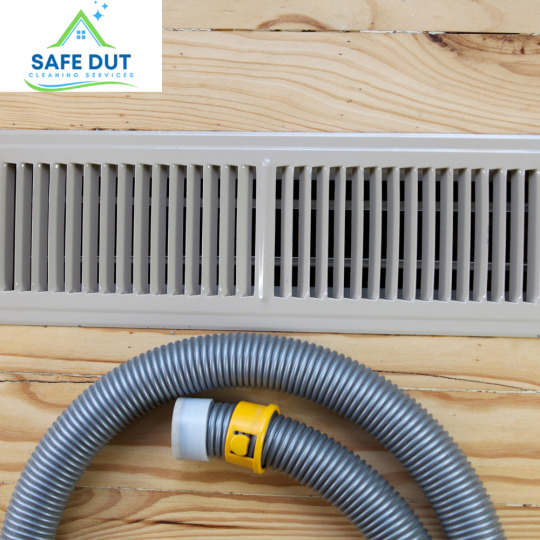
A successful HVAC installation begins long before the equipment arrives. Preparing your home by thoroughly inspecting critical components ensures your system operates efficiently and effectively from the start. Taking the time to address these areas minimizes potential issues and lays the groundwork for long-term comfort and energy savings.
Evaluate the Condition of Your Ductwork The ductwork in your home is the primary channel for air distribution, making its condition vital to HVAC performance. Before installation, inspect for any leaks, blockages, or structural damage that could hinder airflow. A professional air duct cleaning can remove accumulated dust, debris, and allergens, ensuring clean air flows effortlessly. Addressing these concerns in advance reduces strain on your system and helps maintain optimal indoor air quality.
Inspect and Upgrade Insulation Insulation plays a pivotal role in maintaining your home’s temperature and reducing energy waste. Poorly insulated spaces can lead to significant energy loss, forcing your HVAC system to work harder than necessary. Check areas such as the attic, walls, and windows for insufficient or damaged insulation. Making necessary upgrades ensures your new system delivers consistent performance and maximizes energy efficiency.
Ensure Proper Ventilation Adequate ventilation is key to a healthy and efficient HVAC system. Blocked vents or improper airflow pathways can reduce performance and compromise air quality. Verify that all vents are unobstructed and pathways are clear to promote seamless airflow throughout your home. Scheduling air duct cleaning also improves ventilation while removing airborne pollutants that could affect your indoor environment.
Assess Your Electrical System’s Readiness HVAC systems demand significant electrical power, so it’s essential to confirm your home’s wiring and electrical panel can handle the load. An outdated or overloaded system could pose safety risks and impair your new HVAC system’s performance. Consult with a licensed electrician or HVAC technician to ensure your electrical components meet modern safety standards and are equipped for seamless installation.
Lay the Groundwork for Long-Term Efficiency and Comfort By addressing these essential areas—ductwork, insulation, ventilation, and electrical systems—you set the stage for a successful HVAC installation. These preparatory steps not only enhance the performance of your system but also contribute to improved indoor air quality, energy efficiency, and lasting comfort in your home. Taking the time to inspect and optimize these components ensures your HVAC system will operate smoothly for years to come.
#HVAC installation#air duct cleaning#ventilation preparation#energy efficiency#home insulation#HVAC maintenance#indoor air quality#system performance optimization
0 notes
Text
The Connection Between Clean Dryer Vents and HVAC Performance
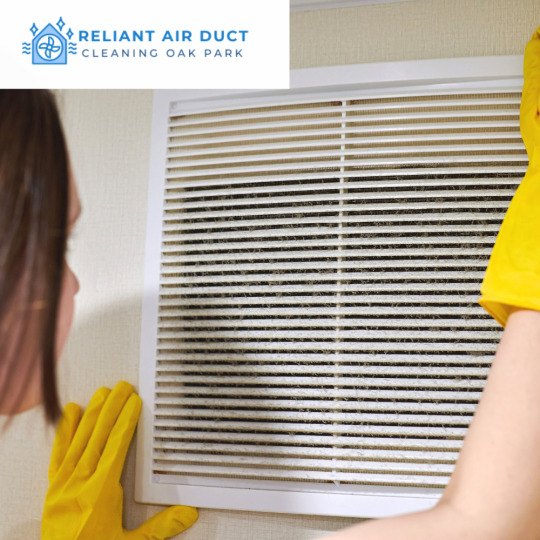
The efficiency of your HVAC system hinges on various factors, but one key element often overlooked is the cleanliness of your dryer vents. Clogged vents can create serious complications, from reducing airflow to putting undue strain on your entire ventilation system. By ensuring your vents are clear, you not only boost HVAC efficiency but also cut energy costs, enhance air quality, and extend the life of your air ducts.
How Blocked Dryer Vents Strain Your HVAC System
When lint and debris accumulate in dryer vents, they restrict airflow, forcing your HVAC system to work overtime to maintain circulation throughout your home. This extra effort accelerates wear on vital components, leading to decreased efficiency and potential system failures. Left unchecked, blockages can result in costly repairs or even necessitate a complete replacement of your air ducts. Routine vent maintenance helps your HVAC system perform at its best and prevents avoidable disruptions.
Boosting Energy Efficiency and Reducing Utility Bills
Clean dryer vents play a surprisingly big role in energy efficiency. Obstructions force your system to consume more power as it struggles to maintain proper airflow and temperature. On the other hand, regularly maintained vents allow your HVAC to function effortlessly, reducing energy usage and cutting down utility costs. Homeowners who prioritize vent care often enjoy smoother system operation, fewer service calls, and a more sustainable home.
Cleaner Vents, Cleaner Air
Dirty vents and ducts are a breeding ground for allergens, mold, and other airborne pollutants. These contaminants circulate through your home, potentially causing discomfort or health issues, especially for those with allergies or respiratory sensitivities. By keeping your dryer vents clean, you reduce these risks and create a fresher, healthier indoor environment. Early intervention also prevents widespread contamination, keeping your ductwork in optimal condition.
Preserving Your HVAC System
Ignoring dryer vent maintenance can lead to long-term damage. Clogged vents increase system pressure, causing overheating and, eventually, component failure. Such issues often require expensive fixes or replacements. Regular cleaning is a straightforward yet powerful way to safeguard your system’s performance and prevent costly damage. By staying proactive, you ensure your HVAC system runs reliably, keeps your home comfortable, and avoids unnecessary expenses.
#dryer vent cleaning#air duct maintenance#HVAC efficiency#indoor air quality#energy savings#airflow optimization#HVAC system maintenance#home ventilation
0 notes
Text
The Benefits of Using Professional Duct Specialists for Leak Repairs
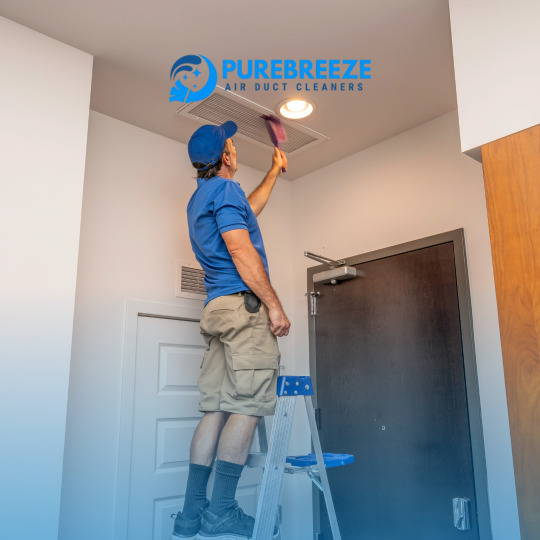
Your home’s air ducts are essential for maintaining a comfortable and energy-efficient environment. Over time, these ducts can develop leaks or cracks, leading to poor air distribution, increased energy bills, and compromised indoor air quality. Relying on professional duct specialists for air duct repair ensures these issues are resolved effectively, keeping your HVAC system in optimal condition.
Why Air Duct Repair Matters
Air duct leaks can significantly impact your home’s comfort and energy efficiency. These leaks allow conditioned air to escape, forcing your HVAC system to work harder. This not only increases energy consumption but also leads to uneven temperatures in different areas of your home. Professional air duct repair addresses these problems, improving system performance and enhancing comfort.
Expertise in Identifying and Sealing Duct Leaks
Professional duct specialists have the tools and expertise to locate leaks that are often hidden from view. Using advanced diagnostic equipment, they can identify areas where air is escaping and seal them effectively. This ensures your ducts are working efficiently, preventing further strain on your HVAC system.
Improved Energy Efficiency
One of the main benefits of air duct repair is enhanced energy efficiency. Leaky ducts force your HVAC system to run longer to maintain the desired temperature, resulting in higher energy bills. Sealing these leaks reduces air loss, which helps your system operate more efficiently and lowers your utility costs.
Better Indoor Air Quality
Leaky ducts can introduce dust, allergens, and pollutants into your home’s air supply, negatively affecting indoor air quality. This can be particularly problematic for individuals with allergies or respiratory conditions. By sealing these leaks, professional air duct repair services help keep contaminants out, ensuring a healthier living environment.
Extending the Lifespan of Your HVAC System
Timely air duct repair reduces the strain on your HVAC system. When your ducts are functioning properly, your system doesn’t have to work as hard to distribute air. This minimizes wear and tear, helping to extend the lifespan of your HVAC unit and reducing the likelihood of expensive repairs or replacements in the future.
Take Advantage of Professional Air Duct Repair
Investing in professional air duct repair is a smart decision for maintaining a comfortable, energy-efficient, and healthy home. By addressing duct leaks promptly, you can improve your HVAC system’s performance, lower energy costs, and enjoy better indoor air quality. Contact a trusted duct specialist today to schedule an inspection and experience the benefits of expert leak repairs.
#Air Duct Repair#Professional Air Duct Repair#Residential Air Duct Repair#Commercial Air Duct Repair#HVAC Duct Repair#Duct Leak Repair#Duct Sealing#Air Duct Maintenance#Airflow Optimization#Indoor Air Quality Improvement#Energy Efficiency#HVAC System Repair#Ductwork Repair Services#Leaky Duct Solutions#Air Duct Inspection#Air Duct Replacement#HVAC Performance#Air Duct Cleaning and Repair#Cost-Effective Duct Repair#Duct Damage Repair#Air Duct Repair Specialists#Air Duct Repair Services Near Me#Home Energy Savings#Air Duct Leak Detection#Improved Air Circulation.
0 notes
Text
Why Air Balancing & Water Balancing Matters in HVAC Systems
Your HVAC system tirelessly toils away to keep your home or building comfortable. But what if its efforts weren't evenly distributed? Uneven airflow and water flow can lead to a host of issues, compromising both comfort and efficiency. This is where air balancing and water balancing in HVAC systems come into play. These crucial processes ensure optimal performance, maximizing comfort, saving energy, and extending the lifespan of your HVAC system.
Understanding Air Balancing
Air balancing involves meticulously adjusting the airflow within the ductwork of your HVAC system. This ensures that each room receives the intended amount of conditioned air, eliminating hot or cold spots. Think of it as fine-tuning the air distribution network of your building. Here's why air balancing matters:
Enhanced Comfort: Balanced airflow means consistent temperatures throughout your space. No more battling hot bedrooms or drafty living rooms – just consistent comfort for everyone.
Improved Air Quality: Proper air circulation helps prevent stagnant air and promotes better indoor air quality.
Reduced Energy Consumption: An unbalanced system can overwork, leading to higher energy bills. Balancing ensures optimal efficiency, saving you money on your utility costs.
Extended Equipment Life: Balanced airflow reduces strain on your HVAC equipment, promoting its longevity and minimizing the need for repairs.
The Importance of Water Balancing
Water balancing focuses on regulating the flow of hot or chilled water throughout the hydronic piping system of your HVAC. Similar to air balancing, it ensures even distribution of conditioned water to heating and cooling coils. Here's how water balancing benefits your HVAC system:
Precise Temperature Control: Balanced water flow allows for more precise control over room temperature, eliminating hot and cold zones.
Optimized System Performance: Balanced water flow ensures your HVAC equipment operates at peak efficiency, maximizing its effectiveness.
Reduced Noise Levels: Unbalanced water flow can lead to gurgling or knocking sounds in pipes. Balancing minimizes these noises, creating a quieter environment.
Lower Maintenance Costs: Balanced water flow reduces stress on pumps and valves, minimizing the need for maintenance and repairs.
Investing in HVAC Air Balancing & Water Balancing Services
Regularly scheduled air balancing and water balancing services, offered by companies like Aerosys [HVAC air balancing & water balancing services, Aerosys], are crucial for maintaining the optimal performance of your HVAC system. These services typically involve:
Comprehensive Inspection: A thorough evaluation of your ductwork and piping system to identify any airflow or water flow imbalances.
Detailed Measurements: Utilizing specialized instruments to measure airflow and water flow at various points within the system.
Adjustments and Calibration: Meticulously adjusting dampers, valves, and other components to achieve balanced airflow and water flow.
Verification and Reporting: Verifying the achieved balance and providing a detailed report outlining the adjustments made and the results.
Benefits of Professional Balancing Services
Hiring a professional HVAC company like Aerosys for air balancing and water balancing offers several advantages:
Expertise and Experience: Trained technicians have the knowledge and experience to effectively diagnose and address any imbalances in your system.
Advanced Equipment: Utilizing specialized tools and instruments ensures precise measurements and adjustments.
Peace of Mind: Professional balancing ensures your HVAC system operates efficiently and effectively, giving you peace of mind.
Investing in air-balancing and water-balancing services is an investment in the long-term health and efficiency of your HVAC system. By ensuring optimal airflow and water flow, you'll experience consistent comfort, lower energy bills, and a longer lifespan for your HVAC equipment. Partner with reputable HVAC consultants like Aerosys to unlock the full potential of your HVAC system and enjoy a more comfortable and cost-effective environment.
#chiller plant optimization companies in india#hvac consultants in india#hvac system audit companies in india#aerosys hvac agency
0 notes
Text
Revamp Your Brand with Graphic Design in Berne, IN
Unlocking the Power of Graphic Design in Berne, IN In the digital age, visual communication plays a pivotal role in capturing attention, conveying messages, and building brands. Berne, IN, a vibrant community known for its strong work ethic and dedication to quality service, can benefit significantly from the expertise of a professional Graphic Designer. Among the standout providers in the area…
#ad design#Berne#blue-collar-business-website#branding for skilled trades#construction-company-web-design#contractor marketing websites#contractor-website-design#custom-websites-for-contractors#designed-by-ced#electrician website design#excavation company web design#facebook ads#fence installer website designer#flooring contractor website design#foundation repair website design#garage door installer website design#Google Ads#graphic design#graphic-designer#gutter service web designer#handyman website design company#hvac contractor web designer#in#junk removal business website design#landscaping business website design#lead generation websites for contractors#local-business#marketing design#mobile-optimized websites for trade companies#mold remediation company web developer
0 notes
Text
Energy Efficiency in Backward Blowers: How They Save Operational Costs
How Backward Blowers Reduce Power Consumption
Backward blowers, specifically backward-curved and backward-inclined fans, are designed for high efficiency and reduced energy consumption. Their unique blade orientation minimizes air resistance, allowing them to achieve greater airflow with lower power input. This results in:
Higher static efficiency: The curved blades reduce turbulence and friction, ensuring smoother airflow.
Lower operational costs: Compared to forward-curved fans, backward blowers require up to 20% less energy for the same output.
Reduced maintenance: The self-cleaning design prevents dust accumulation, reducing wear and tear.
Case Studies on Energy Savings
Case Study 1: HVAC System Optimization
A commercial building replaced its forward-curved fans with backward-inclined blowers from Central Blower. The result?
Energy savings of 18% per year
Reduced noise levels by 30%
Lower maintenance costs by 25% due to self-cleaning properties
Case Study 2: Industrial Ventilation Upgrade
A manufacturing facility switched to backward blowers for its material handling ventilation system. Key results:
25% reduction in power consumption
40% increase in airflow efficiency
Fewer breakdowns and 15% longer equipment lifespan
Choosing the Right Motor and Impeller Design
Selecting the correct motor and impeller is crucial for optimizing energy efficiency. Here’s what to consider:
Motor Efficiency
Choose EC (Electronically Commutated) motors for precise speed control and reduced energy waste.
Opt for premium efficiency (IE3 or IE4) motors to maximize savings.
Ensure compatibility with Variable Frequency Drives (VFDs) for adjustable airflow.
Impeller Design
Backward-Curved Impellers: Best for low to medium pressure applications, offering quieter operation and high efficiency.
Backward-Inclined Impellers: Ideal for high-pressure systems, ensuring better performance in industrial setups.
FAQs
1. How much energy can I save by switching to backward blowers?
Savings depend on your application, but many businesses report 15-25% energy reduction after upgrading.
2. Are backward blowers suitable for HVAC systems?
Yes! They are commonly used in air handling units (AHUs), cooling towers, and ventilation systems due to their efficiency and quiet operation.
3. Do backward blowers require frequent maintenance?
No. Their self-cleaning design reduces dust accumulation, leading to lower maintenance needs and longer service life.
Call to Action (CTA)
Upgrade to Energy-Efficient Backward Blowers Today! Reduce your operational costs and improve airflow efficiency with Central Blower’s backward-curved and backward-inclined blowers. Contact us today for a free consultation and energy savings estimate!
#Backward blowers#Energy-efficient fans#Industrial ventilation#HVAC system efficiency#Backward-curved impellers#Backward-inclined fans#Airflow optimization#Power-saving blowers
0 notes
Text
Best tips for humidity control and Indoor air quality
Maintaining optimal humidity levels and indoor air quality is crucial for a healthy and comfortable living environment. Proper humidity control not only enhances comfort but also prevents health issues and damage to your home. Here are the best tips to achieve ideal humidity levels and improve indoor air quality.

1. Use a Hygrometer
A hygrometer is an essential tool for monitoring indoor humidity levels. Aim for a relative humidity between 30-50%. Levels above 60% can promote mold growth and dust mites, while levels below 30% can cause dry skin and respiratory issues.
2. Invest in a Dehumidifier
If your home has high humidity, especially in basements and bathrooms, a dehumidifier can help reduce excess moisture. Choose a model suitable for the size of the area you need to dehumidify for optimal performance.
3. Utilize Air Conditioners
Air conditioners not only cool the air but also help reduce humidity. Ensure your air conditioning system is well-maintained and filters are changed regularly to keep it running efficiently.
4. Proper Ventilation
Good ventilation is key to controlling humidity and improving air quality. Use exhaust fans in kitchens and bathrooms to remove excess moisture and pollutants. Opening windows regularly can also help circulate fresh air.
5. Houseplants for Natural Air Purification
Certain houseplants like snake plants, spider plants, and peace lilies can improve indoor air quality by absorbing toxins. However, be mindful of overwatering, which can increase humidity levels.
6. Use Moisture Absorbers
Desiccants like silica gel and activated charcoal can help absorb moisture in small, enclosed spaces. These are particularly useful in closets, cabinets, and other areas prone to dampness.
7. Maintain Heating and Cooling Systems
Regular maintenance of your HVAC system ensures it operates efficiently. Clean or replace filters every three months and have your system inspected annually by a professional.
8. Seal Leaks and Insulate
Prevent outdoor air from entering your home by sealing leaks around windows, doors, and in the attic. Proper insulation keeps indoor temperatures stable and reduces the need for constant heating or cooling.
9. Minimize Indoor Pollutants
Reduce indoor pollutants by avoiding smoking indoors, using natural cleaning products, and limiting the use of aerosol sprays. Consider using air purifiers with HEPA filters to remove airborne particles.
By following these tips, you can effectively control humidity and enhance indoor air quality, leading to a healthier and more comfortable home environment.
#humidity#hvac#home & lifestyle#indoor air quality assessment#control#optimal humidity#IAQ#homehumidity
0 notes